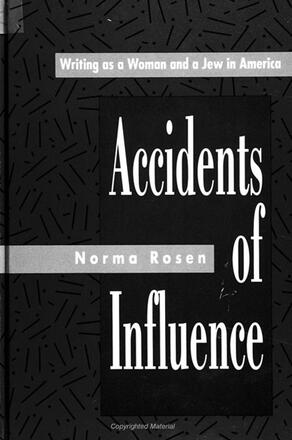
Accidents of Influence
Writing as a Woman and a Jew in America
Alternative formats available from:
Description
For Norma Rosen, the Holocaust is the central event of the twentieth century. In this book, she examines the relationship of post-Holocaust writers to their work in terms of subject, language, imagery, and facing up to the task of writing in a post-Holocaust era. She considers the work of such major influences on our time as T. S. Eliot, Simone Weil, Anne Frank, E. L. Doctorow, Norman Mailer, Eugenio Montale, Philip Roth, and Saul Bellow. Accidents of Influence combines critical analysis with personal response and autobiographical moments. It includes quotidian encounters in friendship, sex, society, art, politics, response to violence, and religious observance, which struggle for moral ground in this post-Holocaust era.
Norma Rosen currently teaches at the Tisch School of the Arts at New York University. She is the author of the novels Joy to Levine!; Touching Evil; At the Center; John and Anzia: An American Romance; and a collection of short stories, Green.
Reviews
"Norma Rosen is a first-rate writer and thinker. The Holocaust, women's consciousness, ideas of the self, literary ciriticism, multiculturalism: Rosen's topics read like a list of crucial agenda items for the last decade of the twentieth century. Rosen is a crisp writer of great probity, in whose work moral tension is taut and palpable. " — Alan L. Berger, Syracuse University.
"What I like most is the sound of this particular human voice in the act of thinking and feeling on the most excruciating subject of our age: what was done and suffered in the Holocaust. It is interesting and impressive that this preoccupation with — this immersion in — unmanageable events is seldom of a personal or egotistical nature. It is not her own, it is her husband's and a people's suffering and loss with which Norman Rosen wrestles. " — Lore Segal, University of Illinois at Chicago
These essays stand as important reflections both on the bleakest period of modern history and on the creative artist's approach to historic phenomena. They offer an enlightening complement to the work of historians and social scientists. " — S. Lillian Kremer, Kansas State University